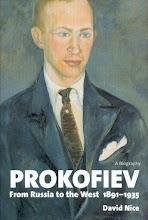
Melancholy, geriatric Eastbourne is where I liked to be beside the seaside as a child. The parents would drive down there about once a month on Sundays in spring and summer, and our rituals would take us from the Wish Tower Cafe, where a difficult friend of ours more recently fled the smell of incontinence on our last revisit, to the Martello Tower, the Lifeboat Museum, the bandstand and the Redoubt.
Returning there to catch the last day of the Ravilious(es) exhibition at the Towner Art Gallery earlier this month, I persuaded my companions to indulge me on a trip down memory lane. We'd done a bit of it when J was singing in a Carmina Burana up the coast with the divine Mary Plazas and a very competent school orchestra. But we hadn't retraced the old route. And I found nothing much had changed. Maybe the older generation is marginally less in evidence, and a few cafes along the prom-prom-prom serve espresso, but that's about it.
The 1930s bandstand, replacing the Victorian 'birdcage' original, was still in full working order. My old dad used to love this music (in fact the only piece I ever heard him hum was 'The Yeomen of England' by Edward German*). And it's still playing to the same sort of crowds (since I assume that the original senior citizens are mostly no more).

This time I had a little more admiration for the design.

Incidentally, I can't remember where I recently read it, but Debussy apparently didn't actually compose La mer at the Grand Hotel nearby; he simply put some finishing touches to the manuscript. And he thought Eastbourne rather drab, though I must say the Duke of Devonshire's white stucco buildings and the gardens are a bit jollier than the post-bombing mess they made of Dieppe central.
On, then, to pay homage to the slot machines on Eugenius Birch's thousand-foot long 1860s pier

and along the East Parade to the Redoubt. Built between 1804 and 1812 as another protection against the Napoleonic invasion, it was always my favourite haunt as a child for what it housed - not so much the model village but a fantasy grotto, apparently mocked up in the early 1960s. What magic I found in its fluorescent fibreglass rock acquarium and its lilac-lit parade of Ionic columns and classical statues. All removed about a decade ago, the nice man in the military museum told me. Anyway, the Redoubt itself has been handsomely restored to something like its original state, and was completely untouristed when we arrived in the mid-afternoon.

The attendant also persuaded me to buy a little clutch of heritage walk leaflets, not by any means wasted as I wanted to explore one area I hadn't seen as a child - the old town which preceded the rail-inspired bathing resort by many centuries. There's not much to see there, and it's quite a hike inland, but worth it for the church. We approached via the posh Victorian west end and the grandiose town hall ('free renaissance' says Pevsner).

St Mary-the-Virgin, on the slopes of the Bourne stream, has suffered from - or been saved by, depending on which way you look at it - Victorian restoration. Still, it's a much-loved place of worship with a healthy 50-strong choir, we were told. The Norman nave yields to a very wide and large chancel with romanesque-style capitals.

In the Gildredge Chapel there's a very fantastical, blow-dried St Michael conquering the dragon by Hugh Easton, made after the 1943 bombing.

The church's most fascinating memorial commemorates the untimely death of Henry Lushington, who survived the Black Hole of Calcutta by drinking his own sweat only to be 'deliberately and inhumanely murdered' in Patna at the age of 26 by 'the Nabob Cossim Ally Kawn'. His parents erected a bust by Sir Robert Taylor above their long and loving inscription.

Outside, the church with its massy 14th century tower is complemented by an adjoining 16th century rectory manor.

There's not a lot of medieval building to be seen in the vicinity, so we headed down to the pretty Motcombe Gardens and a house opposite where an iron silhouette marks the home of the very late, great Tommy Cooper (!)

And just like that we were back at the station for the return train to London.
*Talk of the devil and here it is. I never thought to hear the tune my father never sang beyond the first line, and always studiously avoided an LP of Merrie England in the local library. But in the recently recreated Prom Last Night of 1910, there it was from the very unlikely, and now rather knackered, vocal chords of Sergei Leiferkus. The rendition is idiosyncratic, to say the least.
If you want less bizarre diction, Peter Dawson can be heard on YouTube too. But a minute and a half is quite enough for me. G&S's Yeomen of the Guard - now that's quite another matter.














































